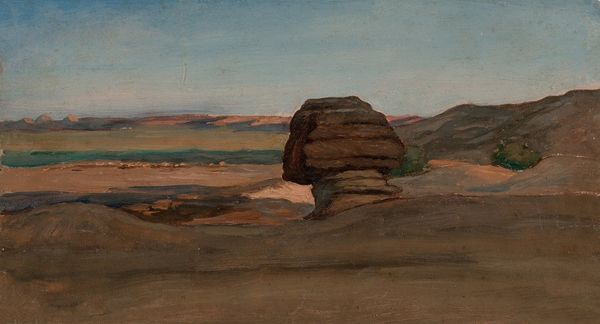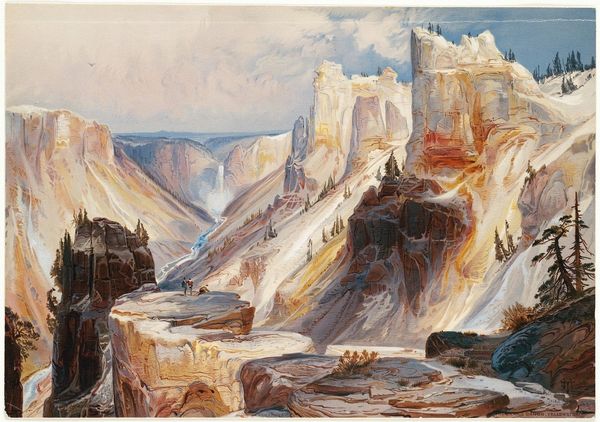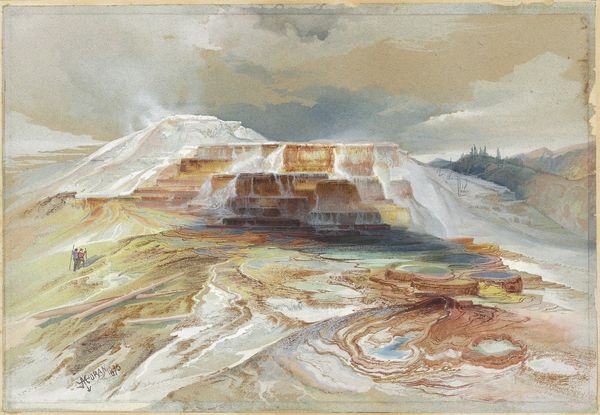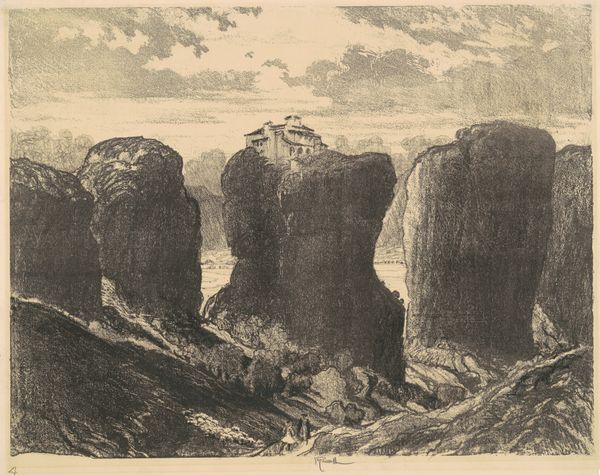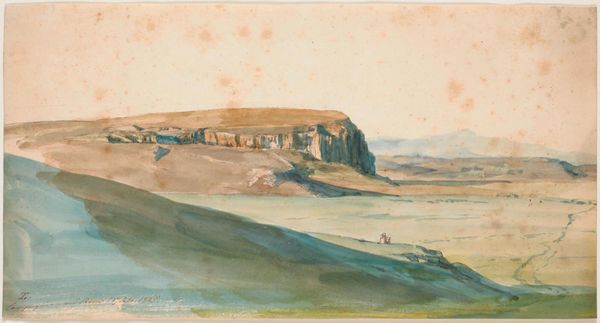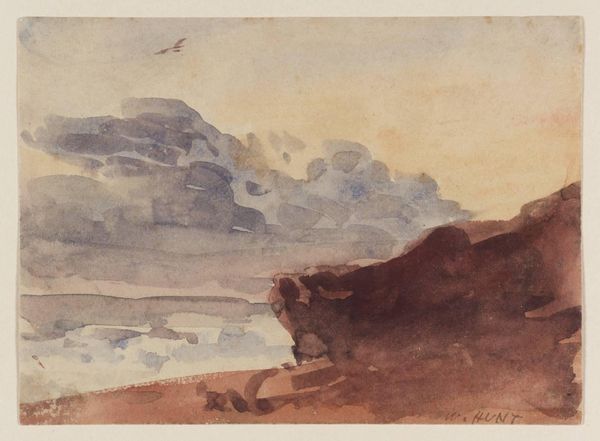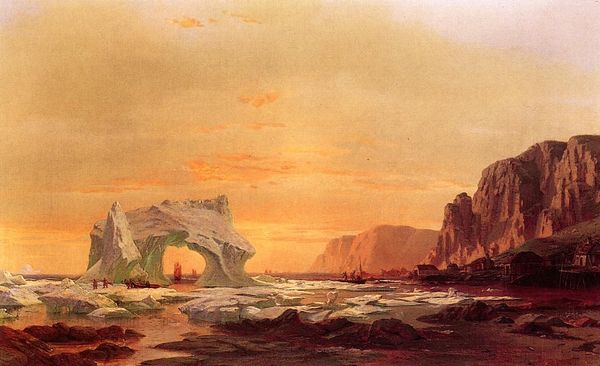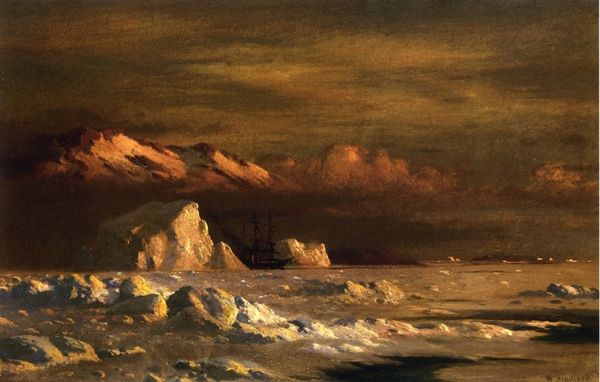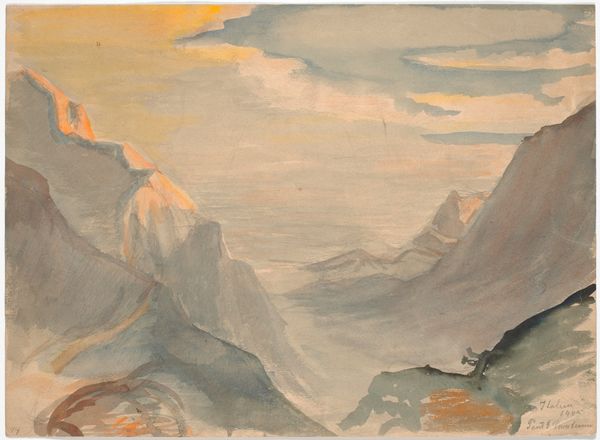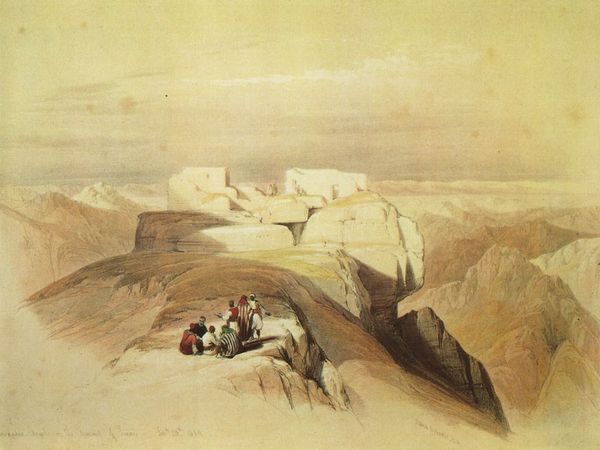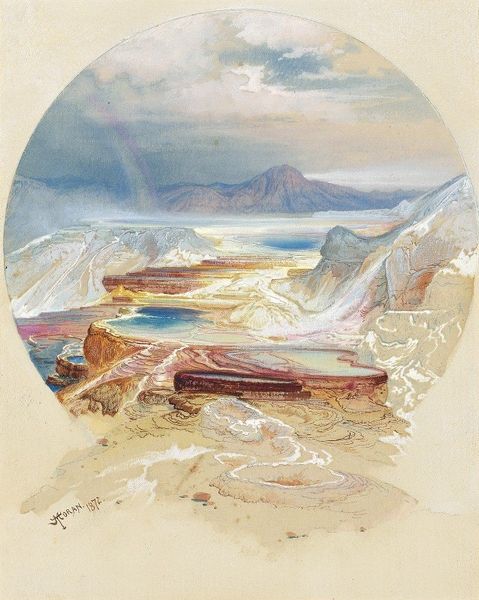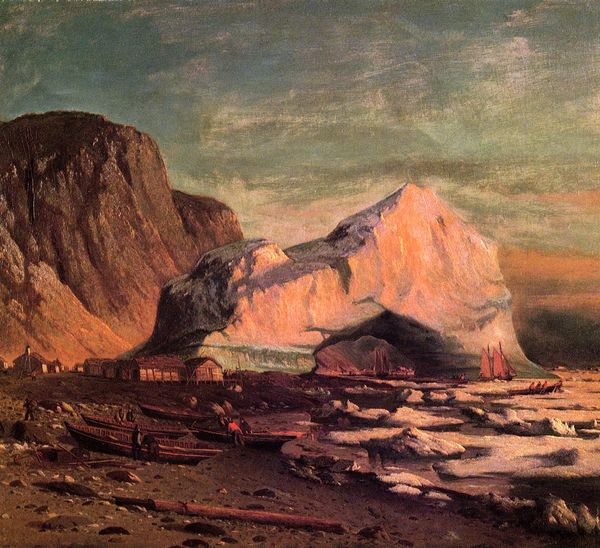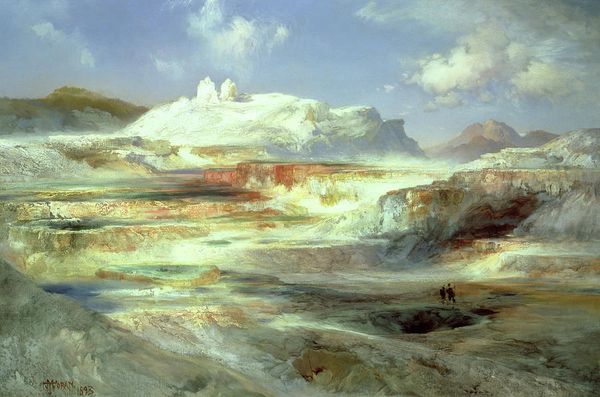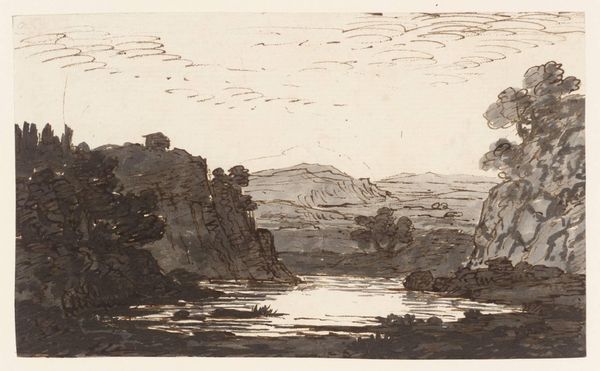
plein-air, watercolor
#
plein-air
#
landscape
#
charcoal drawing
#
oil painting
#
watercolor
#
geometric
#
hudson-river-school
#
watercolor
Copyright: Public Domain: Artvee
Thomas Moran created Shin-Au-Av-Tu-Weap using watercolor, a medium known for its portability, and capacity to quickly capture fleeting impressions. Working en plein air, or outdoors, demanded a swift technique. Watercolor allowed Moran to record the landscape's grandeur directly, emphasizing the immediacy of his experience. His light washes capture the arid atmosphere, while darker tones define the dramatic rock formations. Moran's choice of watercolor wasn't just practical, it aligned with a broader cultural movement. In the 19th century, watercolor painting became increasingly popular among amateur and professional artists alike, as industrialization allowed for the mass production of affordable pigments and papers. Moran elevated this accessible medium to create works that captured the sublime beauty of the American West, fueling a sense of national identity and romanticism about the landscape. Understanding Shin-Au-Av-Tu-Weap requires recognizing watercolor's role in democratizing art-making, and also its power to shape perceptions of nature.
Comments
No comments
Be the first to comment and join the conversation on the ultimate creative platform.
